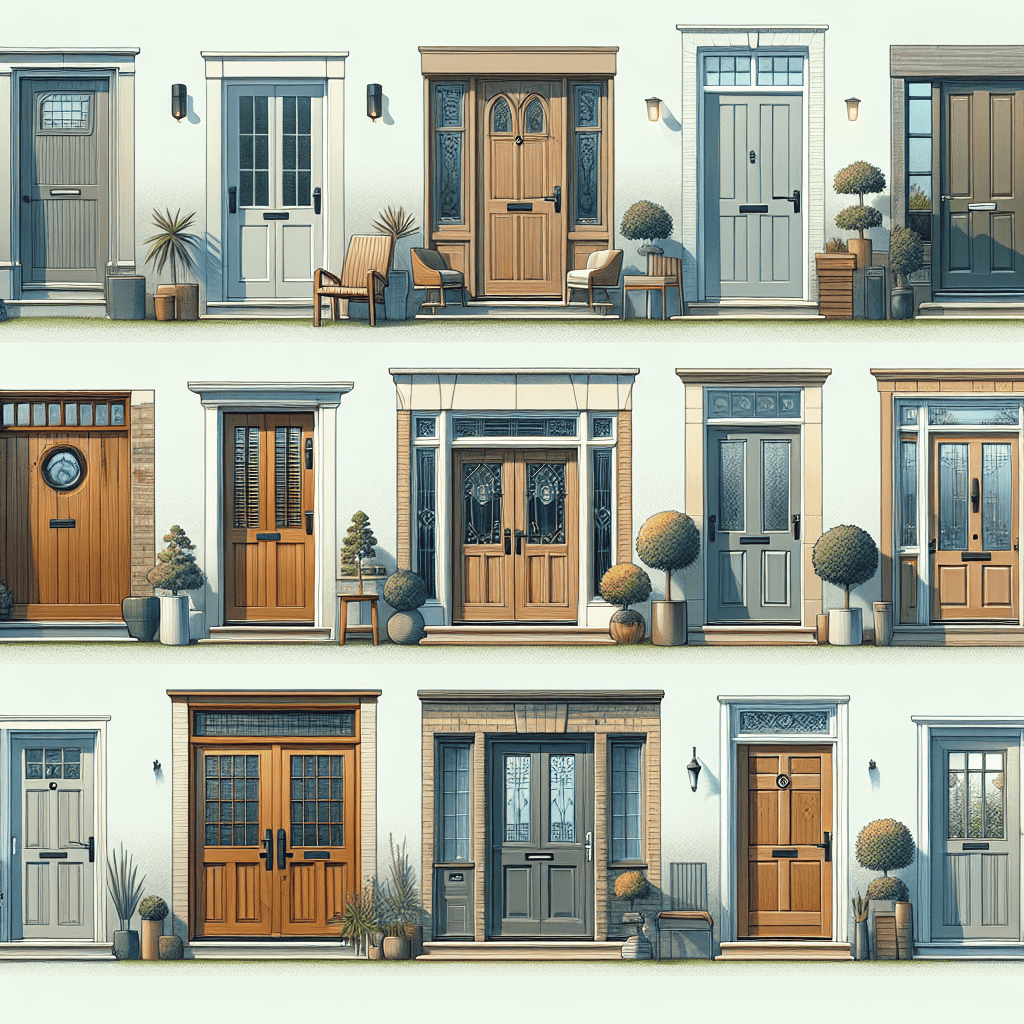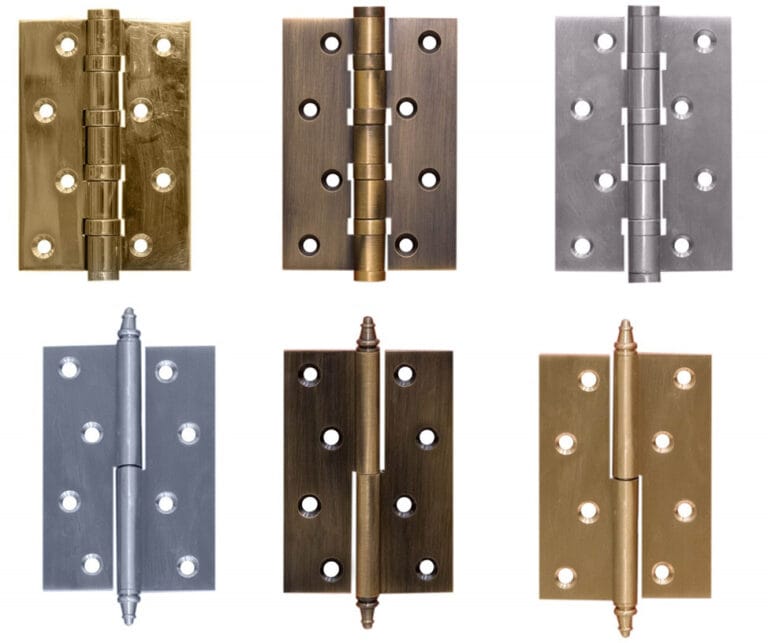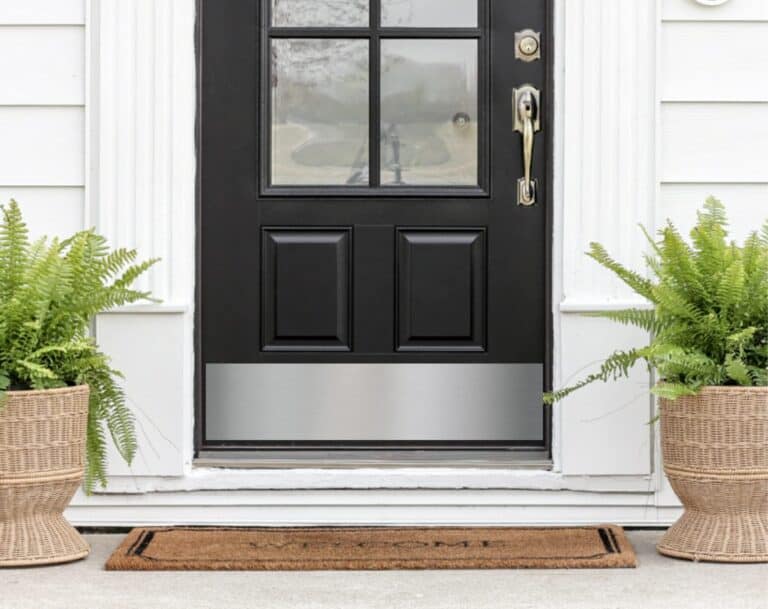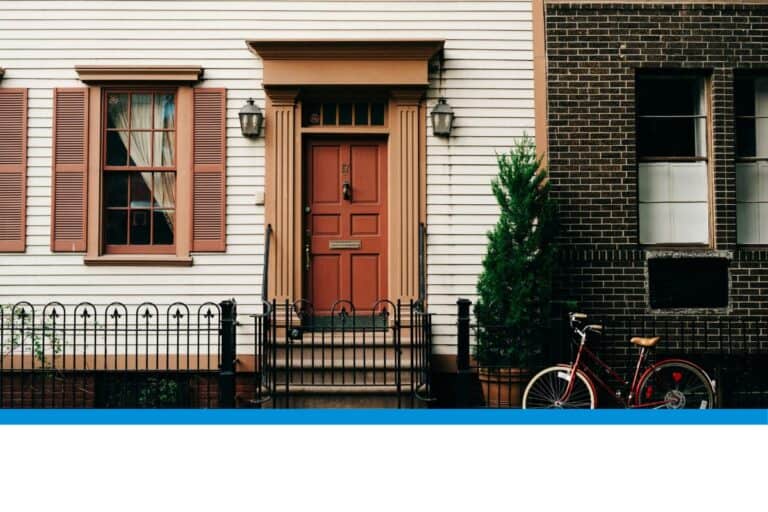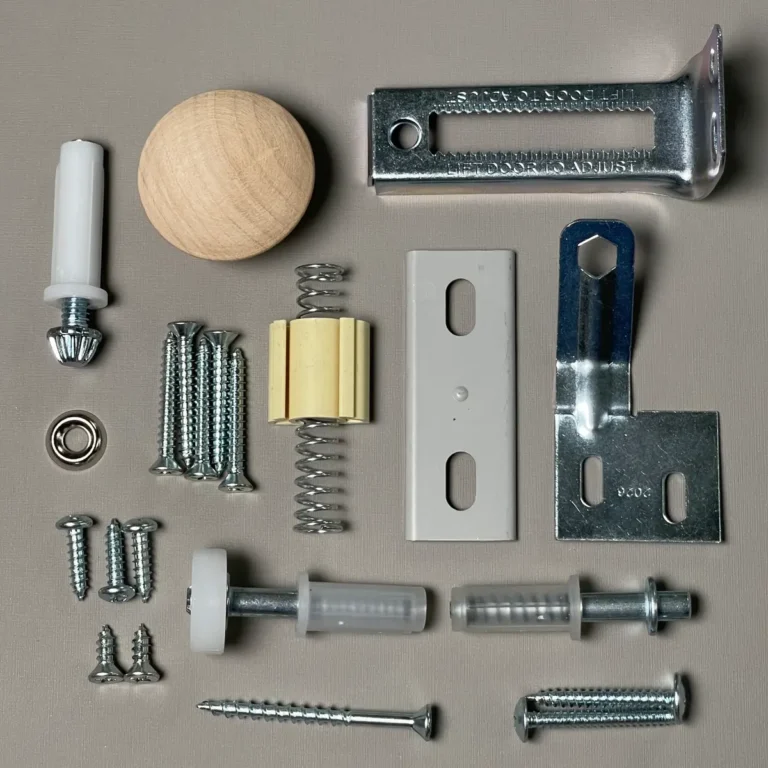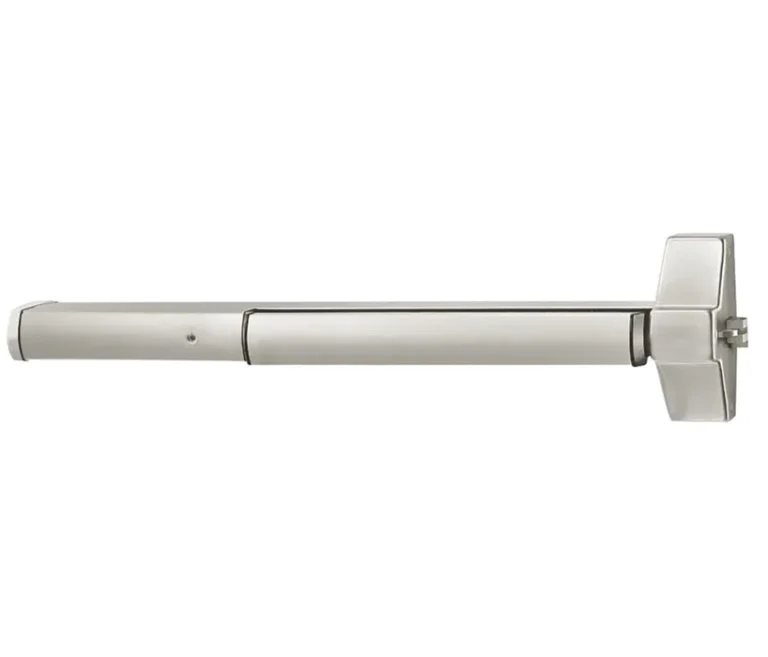When it comes to enhancing the curb appeal and security of your home, exterior residential doors play a key role. These doors not only serve as a welcoming entry point but also provide essential protection from the elements and potential intruders. Whether you’re updating your front door for a fresh look or selecting the perfect style for a new build, choosing the right type of exterior door can make a lasting impression. From classic wood designs to modern steel or fiberglass options, exterior doors are the first statement your home makes to the world.
Beyond aesthetics, the functionality and durability of exterior residential doors are crucial factors to consider. Different materials offer unique benefits—wood exudes warmth and tradition, fiberglass provides superior insulation, and steel doors deliver unmatched strength. Additionally, advancements in door technology now include energy-efficient designs that help regulate indoor temperatures, reducing your energy bills.
Homeowners can also opt for doors with enhanced security features such as multi-point locking systems, impact-resistant glass, and smart technology integration. With so many options available, selecting the right exterior door can transform both the look and performance of your home.
Let’s take a more in depth look at everything to consider for exterior residential doors.
Selecting the Right Material
When it comes to selecting exterior residential doors for your home, there are several factors to consider. One of the most important decisions you will need to make is choosing the right material for your door. The material you choose will not only impact the overall look and style of your home, but it will also affect the door’s durability, energy efficiency, and maintenance requirements. In this section, we will explore the different materials commonly used for exterior residential doors and discuss their pros and cons.
Wooden Exterior Residential Doors
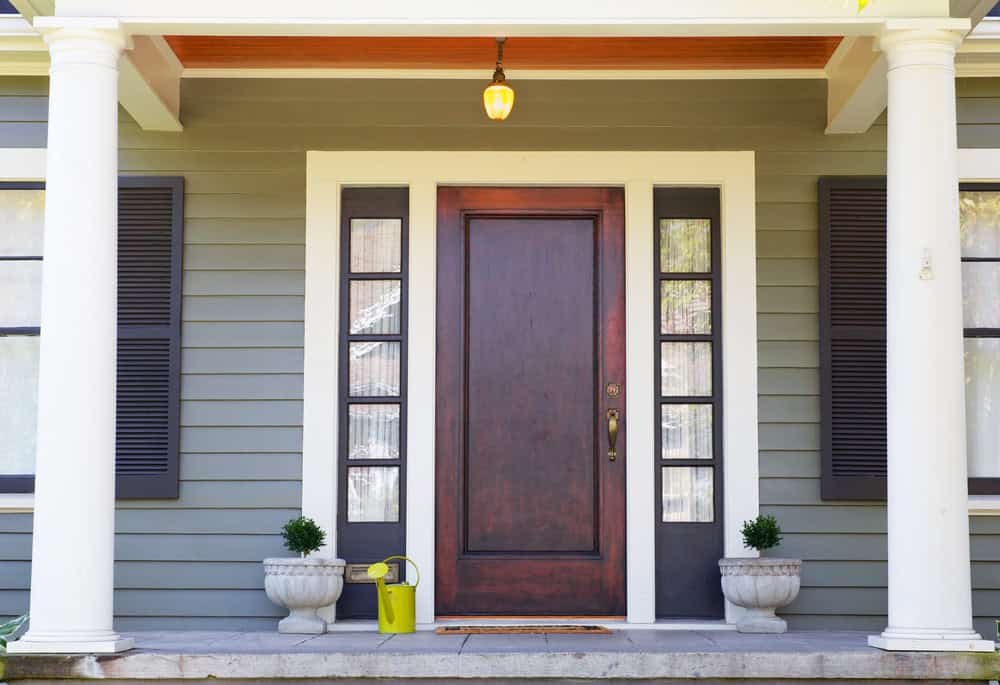
When it comes to timeless elegance and natural beauty, wooden exterior residential doors are a popular choice among homeowners. Known for their classic appeal and versatility, wood doors can be customized with a variety of finishes, stains, and designs to match any architectural style. Whether you prefer the rich grain of mahogany, the rustic charm of oak, or the sleek sophistication of walnut, wood doors offer a level of craftsmanship and detail that synthetic materials often can’t replicate.
One of the biggest advantages of wood exterior doors is their ability to be refinished and repaired over time, making them a long-lasting investment. However, they do require regular maintenance, such as sealing and varnishing, to protect against moisture, warping, and sun damage. Modern wood doors can be built with solid cores or engineered wood to improve their insulation and durability, while still providing that traditional warmth and character. For homeowners seeking an upscale, natural look with plenty of design flexibility, wood exterior doors remain a top contender.
Fiberglass Exterior Residential Doors
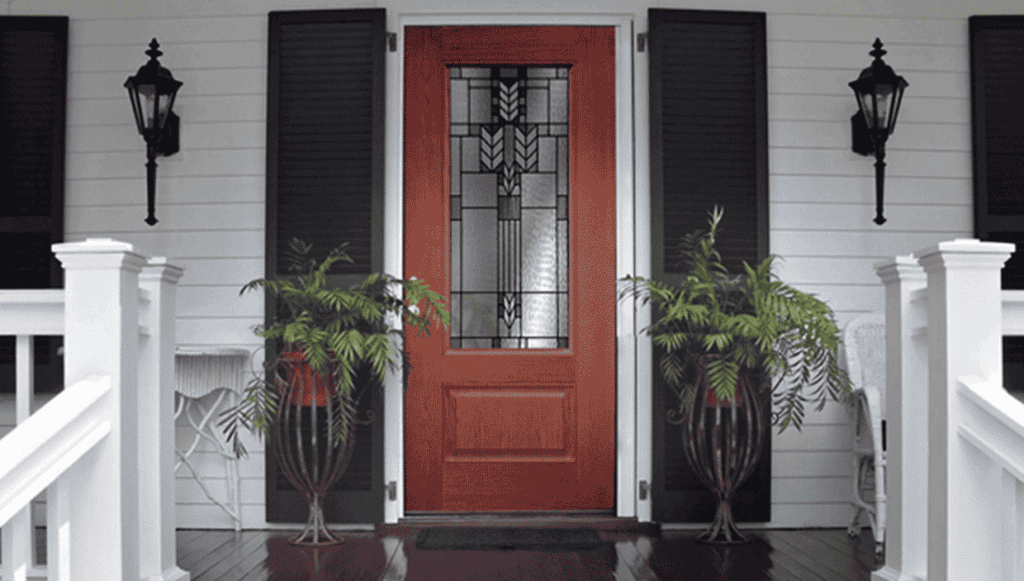
Fiberglass exterior residential doors have gained popularity for their blend of durability, energy efficiency, and low maintenance. One of the main benefits of fiberglass doors is their resistance to the elements. Unlike wood, fiberglass won’t warp, crack, or rot when exposed to moisture or extreme temperatures, making it ideal for regions with harsh weather conditions. Additionally, these doors are highly energy-efficient, thanks to their insulated cores that help keep your home warm in winter and cool in summer, reducing energy costs.
Fiberglass doors are also incredibly versatile in terms of design. They can be manufactured to mimic the look and texture of real wood, providing the beauty of a wood door without the upkeep. Available in a wide range of colors, finishes, and styles, fiberglass doors can complement both traditional and modern home designs. Another advantage is their durability; they are highly resistant to dents, scratches, and everyday wear, making them a great long-term investment. For homeowners seeking a door that combines style, strength, and energy savings with minimal maintenance, this type of an exterior residential door is an excellent choice.
Steel Exterior Residential Doors
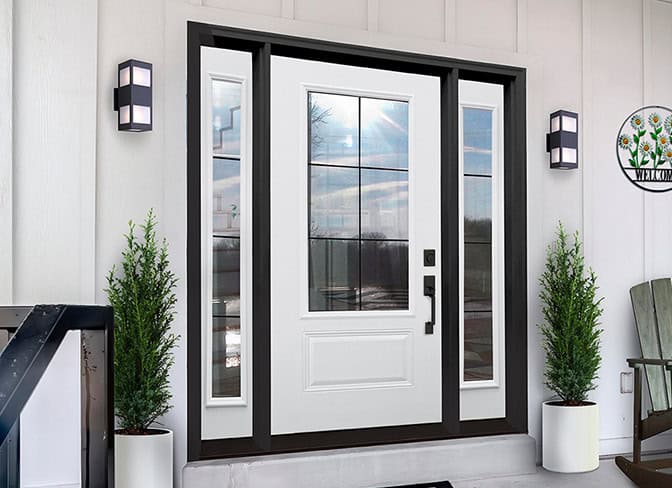
Steel exterior residential doors are the go-to option for homeowners prioritizing security and durability. Known for their incredible strength, steel doors provide a high level of protection against forced entry, making them a popular choice for enhancing home safety. These doors often come with reinforced cores and multi-point locking systems, giving homeowners peace of mind when it comes to security. Additionally, steel doors are fire-resistant and can withstand severe weather conditions, such as high winds and heavy rain, without warping or cracking.
One of the major benefits of steel doors is their low maintenance. Unlike wood, they don’t require frequent refinishing, and unlike fiberglass, they resist dents and scratches. Even if minor damage occurs, many steel doors are equipped with protective coatings that prevent rust, ensuring a long-lasting, durable finish. In terms of energy efficiency, steel doors often feature insulated cores that help regulate indoor temperatures, making them an eco-friendly and cost-effective option.
Available in a wide range of colors and styles, steel doors can suit various home designs, from sleek and modern to more traditional looks. Whether you want a minimalist, solid steel door or one with glass panels for added style, steel doors offer versatility along with unmatched strength and reliability.
Aluminum Exterior Residential Doors
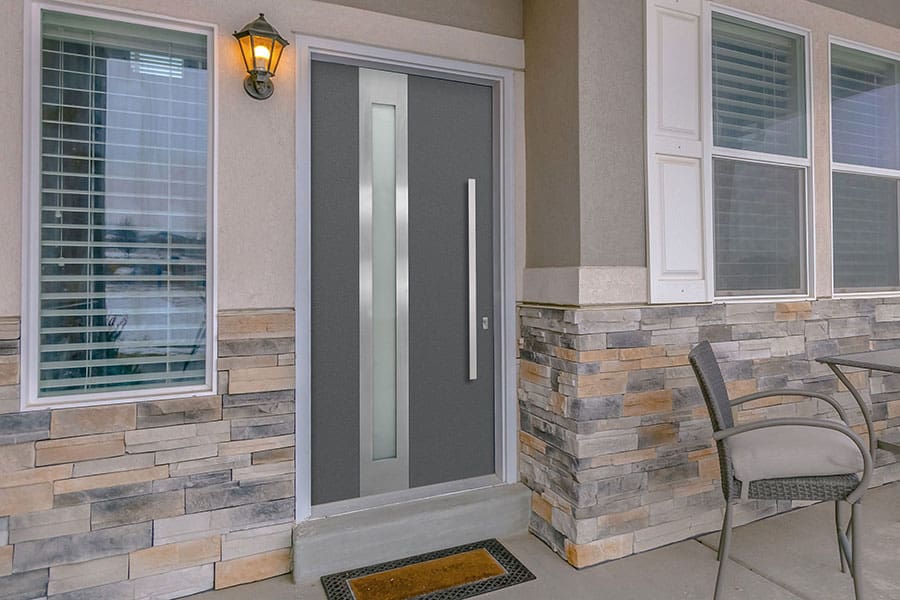
Aluminum exterior residential doors are a sleek, modern option that offers durability and a lightweight design. One of the standout benefits of aluminum doors is their excellent resistance to corrosion and rust, making them an ideal choice for homes in coastal or humid environments. This type of exterior residential doors require minimal maintenance, as they won’t warp, swell, or crack due to temperature fluctuations or moisture exposure. Aluminum’s natural strength also ensures that the doors maintain their structural integrity over time, even in harsh weather conditions.
Aluminum doors are often praised for their modern aesthetic, featuring slim frames and large glass panels that allow for more natural light and a contemporary look. Despite their lightweight nature, aluminum doors can be reinforced with insulation, making them energy-efficient and helping reduce heating and cooling costs. They’re also highly customizable, available in a range of finishes, colors, and styles to suit different architectural tastes.
While aluminum doors may not offer the same level of security as steel, they can be paired with advanced locking systems for added protection. Their smooth, sleek appearance and ease of maintenance make them a great choice for homeowners looking for a modern, durable, and stylish exterior door option that requires little upkeep.
In conclusion, choosing the right material for your exterior residential doors is an important decision that will impact the overall look, durability, and energy efficiency of your home. Wood doors offer timeless beauty but require regular maintenance. Fiberglass doors are durable and low maintenance but can be more expensive. Steel doors are strong and secure but may rust if not properly maintained. Aluminum doors are lightweight and modern but may not offer the same level of security.
Consider your budget, style preferences, and maintenance requirements when selecting the material for your exterior door.
Factors to Consider When Selecting Exterior Residential Doors
When it comes to selecting exterior residential doors for your property, there are several other important factors to consider in addition to material. The right door can enhance the curb appeal of your home, provide security, and improve energy efficiency. We will now discuss the key factors that you should keep in mind when choosing exterior residential doors.
One important factor to consider is the style of the door. The style should complement the overall aesthetic of your home. There are various styles to choose from, including traditional, modern, rustic, and contemporary. Traditional doors often feature panel designs and decorative glass inserts. Modern doors, on the other hand, have clean lines and minimalistic designs. Rustic doors typically have a distressed or weathered appearance, while contemporary doors are sleek and minimalist. Even arched doors are becoming popular again with craftsman style houses.
In addition to style, you should also consider the size and configuration of the door. The size should be proportionate to the entrance of your home. Standard door sizes are typically 36 inches wide and 80 inches tall, but custom sizes are also available. The configuration refers to the number and arrangement of panels and glass inserts. Single doors are the most common configuration, but double doors and doors with sidelights are also popular options.
Security is another crucial factor to consider when selecting an exterior door. Your door should be able to withstand forced entry attempts and provide a sense of safety for your family. Look for doors with solid cores and reinforced frames. Additionally, consider installing security hardware such as smart doorbells and smart locks.
Energy efficiency is also an important consideration, especially if you live in an area with extreme weather conditions. Look for doors with high insulation values, such as those with foam cores or multiple layers of glass. Weatherstripping and a tight seal are also essential to prevent drafts and reduce energy loss.
Lastly, you should consider your budget when selecting an exterior door. The cost of a door can vary depending on the material, style, and additional features. It is important to find a balance between quality and affordability. Remember that investing in a high-quality door can save you money in the long run by improving energy efficiency and reducing maintenance costs.
As you can see, selecting the right type of exterior residential doors for your home requires careful consideration of several factors. The material, style, size, configuration, security, energy efficiency, and budget all play a role in making the right choice.
By taking these factors into account, you can find a door that not only enhances the appearance of your home but also provides security and energy efficiency.
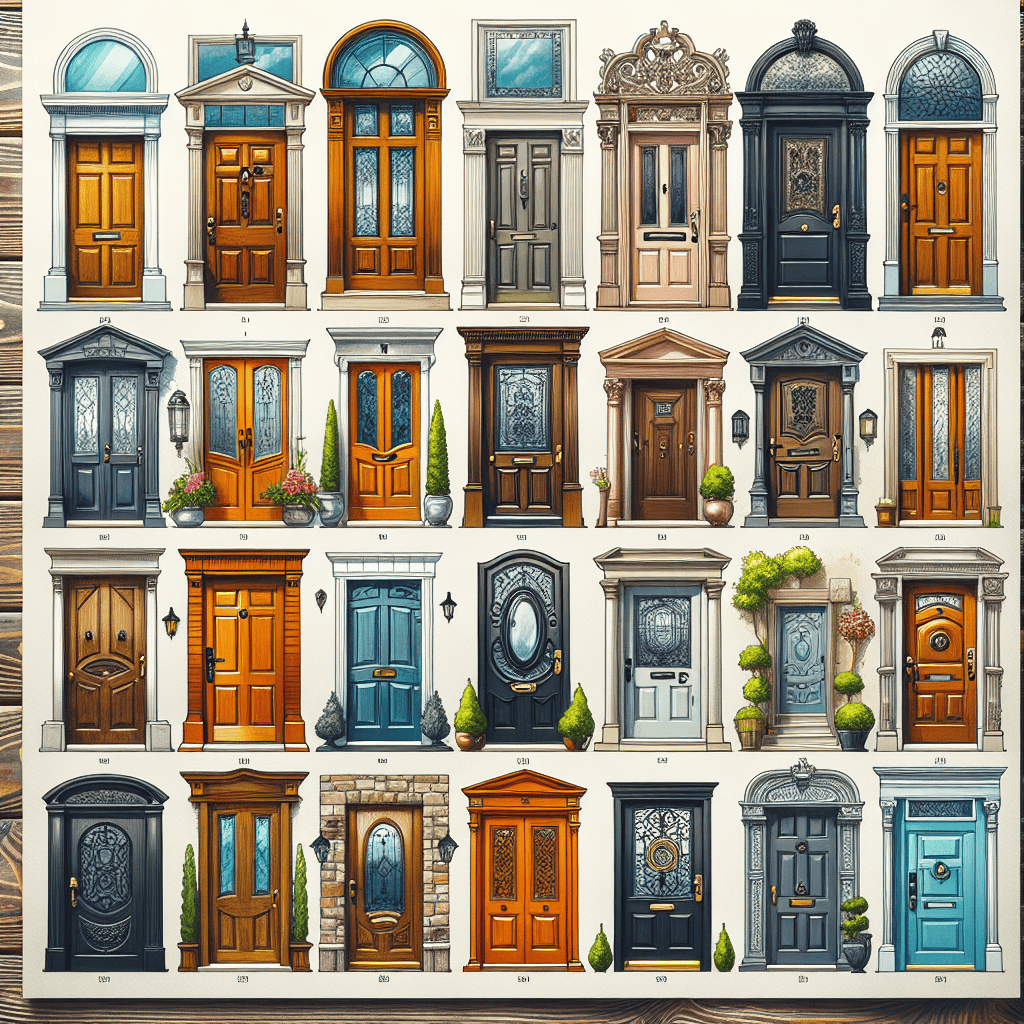
Enhancing Curb Appeal with Exterior Door Design
When it comes to the overall aesthetic of a home, the exterior residential doors play a crucial role. Not only do they provide security and insulation, but they also contribute to the curb appeal of the property. Choosing the right type of exterior door design can make a significant difference in the overall appearance of your home. In this part of our exterior residential doors guide, we will explore various aspects of exterior residential doors and provide you with valuable insights to help you make an informed decision.
First and foremost, it is essential to consider the architectural style of your home when selecting exterior residential doors. Different architectural styles call for different door designs to maintain harmony and coherence. For instance, a modern home would benefit from a sleek and minimalist door design, while a traditional home would be better suited with a more ornate and classic door style. By considering the architectural style, you can ensure that your exterior door complements the overall look of your home.
In addition to material, the color and finish of the exterior door can greatly impact its visual appeal. The color should complement the overall color scheme of your home’s exterior. Neutral colors such as white, black, or gray are versatile options that can work well with various architectural styles. However, if you want to make a bold statement, consider opting for a vibrant color that adds a pop of personality to your home’s façade. Furthermore, the finish of the door, whether it be matte, glossy, or textured, can add depth and visual interest to the overall design.
When it comes to door hardware, it is important to choose pieces that not only enhance the door’s functionality but also contribute to its aesthetic appeal. Handles, locks, and hinges should be selected with care to ensure they complement the overall design of the door. For instance, a modern door would benefit from sleek and minimalist hardware, while a traditional door would be better suited with more ornate and decorative hardware. Additionally, consider the finish of the hardware, whether it be brushed nickel, bronze, or brass, to ensure it matches the overall style of your home.
Lastly, don’t forget to consider the importance of natural light when choosing exterior residential doors. Doors with glass panels or sidelights can allow natural light to flow into your home, creating a warm and inviting atmosphere. However, it is crucial to strike a balance between privacy and natural light. Consider frosted or textured glass options if privacy is a concern, or opt for smaller glass panels strategically placed to maintain privacy while still allowing light to enter.
Enhancing the curb appeal of your home with the right exterior door design is another crucial aspect of home improvement. By considering the architectural style, material selection, color and finish, door hardware, and natural light–you can make an informed decision that not only enhances the visual appeal of your home but also provides security and functionality.
Remember, your exterior door is the gateway to your home, so choose wisely to make a lasting impression.
Energy Efficiency and Exterior Residential Doors
When it comes to choosing exterior residential doors, energy efficiency is an important factor to consider. Not only can energy-efficient doors help reduce your carbon footprint, but they can also save you money on your energy bills. In this section, we will explore the various aspects of energy efficiency in exterior residential doors and provide you with a complete guide to making the right choice for your home.
One of the key factors that determine the energy efficiency of a door is its insulation properties. Doors with good insulation can prevent heat transfer between the inside and outside of your home, keeping your living spaces comfortable year-round. Insulation is typically measured by the door’s U-factor, which indicates how well it can resist heat flow. The lower the U-factor, the better the insulation.
Another important aspect to consider is the door’s weatherstripping. Weatherstripping helps seal any gaps between the door and the frame, preventing drafts and air leakage. High-quality weatherstripping can significantly improve the energy efficiency of a door, reducing energy loss and improving indoor comfort.
In addition to insulation and weatherstripping, the material of the door itself plays a crucial role in energy efficiency. Different materials have different thermal properties, which can affect how well they insulate your home. For example, wood doors are known for their natural insulation properties, while steel doors are more prone to heat transfer. However, advancements in technology have led to the development of energy-efficient steel and fiberglass doors that can rival the insulation capabilities of wood.
To further enhance the energy efficiency of your exterior residential doors, consider adding features such as double or triple glazing. These doors have multiple layers of glass with insulating gas in between, providing better thermal insulation and soundproofing. Additionally, low-emissivity (low-e) coatings can be applied to the glass to reduce heat transfer and block harmful UV rays.
When selecting an energy-efficient door, it is also important to consider its orientation and exposure to the elements. Doors that face south or west are more likely to be exposed to direct sunlight and heat, so choosing a door with higher insulation properties is advisable. Similarly, if your door is exposed to strong winds or heavy rain, opt for a door with better weather resistance to prevent air and water infiltration.
Lastly, it is worth mentioning that energy efficiency is not limited to the door itself. The installation process is equally important in ensuring optimal energy performance. Improper installation can lead to gaps and air leakage, negating the benefits of an energy-efficient door. Therefore, it is crucial to hire a professional installer who is experienced in installing exterior residential doors.
Taking the aforementioned facts into account–energy efficiency is a crucial consideration when choosing exterior residential doors. Insulation, weatherstripping, material, glazing, and orientation are all factors that contribute to the energy efficiency of a door.
By selecting a door with good insulation properties, high-quality weatherstripping, and appropriate materials, you can improve the energy efficiency of your home and enjoy the benefits of reduced energy consumption and lower utility bills. Remember to also consider the orientation and exposure of your door, and ensure proper installation to maximize energy efficiency.
Security Features for Exterior Residential Doors
When it comes to choosing exterior residential doors for your property, security should be a top priority. After all, your front door is the main entry point to your home, and it is essential to ensure that it is secure and provides adequate protection against potential intruders. In this section, we will discuss some of the key security features to consider when selecting an exterior residential door.
A crucial security feature to consider is the type of lock used on the door. Deadbolt locks are highly recommended for exterior doors as they offer superior protection compared to standard doorknob locks. Deadbolts extend deep into the door frame, making it extremely difficult for intruders to force the door open. Look for deadbolts with at least a one-inch throw, as they are more resistant to tampering. If your budget allows it, we strongly encourage smart locks as part of securing your door.
In addition to the type of lock, the quality of the lock is equally important. Opt for high-quality locks that are resistant to picking, drilling, and bumping. Grade 1 deadbolt locks are the most secure and are often recommended by security experts. These locks undergo rigorous testing to ensure their strength and durability, providing you with peace of mind knowing that your door is well-protected.
Consider installing a door with a reinforced frame. The frame is the part of the door that attaches to the wall, and it plays a crucial role in the overall security of the door. Reinforced frames, often made of steel or solid wood, provide added strength and prevent the door from being easily kicked in or forced open. A strong frame combined with a solid core and high-quality lock creates a formidable barrier against potential intruders.
Another security feature to consider is the presence of a peephole or a door viewer. These small devices allow you to see who is outside your door without having to open it. They are particularly useful for verifying the identity of visitors before granting them access to your home. Look for peepholes with a wide-angle view and a cover to prevent anyone from looking in from the outside.
Lastly, consider the material of the door itself. While wood doors are aesthetically pleasing, they may not offer the same level of security as metal doors. Metal doors, particularly those made of steel, are highly resistant to forced entry and provide excellent protection against break-ins.
When selecting exterior residential doors, it is crucial to prioritize security features. Look for doors with a solid core, high-quality locks, reinforced frames, and the presence of a peephole or door viewer. Consider the material of the door, with metal doors offering superior security compared to wood doors. By investing in secure exterior residential doors, you can enhance the safety and protection of your home, providing you and your family with peace of mind.
The Importance of Proper Door Installation
When it comes to exterior residential doors, proper installation is of utmost importance. A door that is not installed correctly can lead to a variety of issues, ranging from security concerns to energy inefficiency. In this section, we will explore why proper door installation is crucial and the potential consequences of neglecting this important step.
First and foremost, properly installed exterior residential doors ensures the security of your home. A door that is not installed correctly may have gaps or misalignments that can be exploited by intruders. These vulnerabilities can compromise the safety of your family and belongings. By ensuring that your door is installed properly, you can have peace of mind knowing that your home is secure.
In addition to security, proper door installation also plays a significant role in energy efficiency. A poorly installed door can result in drafts, which can lead to heat loss during the winter and cool air escaping during the summer. This can significantly impact your energy bills, as your heating and cooling systems will have to work harder to maintain a comfortable temperature. By investing in proper door installation, you can improve the energy efficiency of your home and reduce your carbon footprint.
Furthermore, properly installed exterior residential doors enhances the overall aesthetic appeal of your home. An ill-fitting or misaligned door can detract from the visual appeal of your exterior, affecting the curb appeal and potentially lowering the value of your property. On the other hand, a door that is installed correctly will seamlessly blend with the architectural style of your home, enhancing its overall appearance.
When it comes to door installation, it is essential to hire a professional. While some homeowners may be tempted to tackle the installation themselves, it is a task that requires expertise and precision. A professional installer will have the necessary tools and knowledge to ensure that the door is installed correctly, minimizing the risk of any issues down the line.
During the installation process, the professional will carefully measure the door frame to ensure a perfect fit. They will also make any necessary adjustments to ensure that the door is level and plumb. Additionally, they will properly seal the door to prevent any air or water infiltration. These meticulous steps are crucial in guaranteeing a secure, energy-efficient, and visually appealing door.
Taking into consideration all of the above–proper door installation is of utmost importance when it comes to exterior residential doors. It ensures the security of your home, improves energy efficiency, and enhances the overall aesthetic appeal. By hiring a professional installer, you can rest assured that the door will be installed correctly, minimizing any potential issues. Investing in proper door installation is a wise decision that will benefit you in the long run, providing you with a safe, comfortable, and visually pleasing home.
Maintaining and Caring for Your Exterior Door
When it comes to your home’s exterior, the front door is often the first thing that visitors see. It not only serves as an entryway but also plays a crucial role in the overall aesthetic appeal and security of your home. To ensure that your exterior residential doors remain in top condition and continues to make a positive impression, it is important to properly maintain and care for it. In this section, we will provide you with a complete guide on how to do just that.
Regular cleaning is an essential part of maintaining your exterior residential doors. Depending on the material of your door, you may need to use different cleaning methods. For wooden doors, a mild detergent mixed with water can be used to remove dirt and grime. Be sure to avoid using harsh chemicals or abrasive cleaners, as they can damage the finish of the door. For fiberglass or steel doors, a non-abrasive cleaner can be used to remove dirt and stains. It is important to rinse the door thoroughly after cleaning to remove any residue.
In addition to regular cleaning, it is important to inspect your exterior door for any signs of damage or wear. Check for cracks, dents, or warping, as these can affect the door’s functionality and security. If you notice any issues, it is best to address them as soon as possible to prevent further damage. For minor scratches or dents, you can use touch-up paint or filler to repair them. However, for more significant damage, it may be necessary to replace the door or seek professional help.
To keep your exterior residential doors functioning properly, it is important to regularly lubricate the hinges and locks. This will help prevent rust and ensure smooth operation. Use a silicone-based lubricant or a light machine oil to lubricate the hinges and locks. Be sure to wipe away any excess lubricant to prevent it from attracting dirt and debris.
Weatherstripping is another important aspect of maintaining your exterior residential doors. It helps to seal gaps and prevent drafts, which can improve energy efficiency and reduce heating and cooling costs. Over time, weatherstripping can become worn or damaged, so it is important to inspect it regularly. If you notice any gaps or cracks, replace the weatherstripping to ensure a tight seal.
In addition to regular maintenance, it is important to take steps to protect your exterior door from the elements. Applying a protective finish or paint can help prevent damage from moisture, sunlight, and extreme temperatures. Be sure to choose a finish or paint that is specifically designed for exterior use and follow the manufacturer’s instructions for application.
Finally, it is important to practice good security habits to protect your exterior residential doors. Ensure that all locks are in working order and consider installing additional security measures, such as a deadbolt or security camera. It is also important to be mindful of who has access to your home and to never leave your exterior door unlocked or unattended.
Maintaining and caring for your exterior door is essential for both its appearance and functionality. Regular cleaning, inspection, lubrication, and weatherstripping can help keep your door in top condition. Additionally, protecting your door from the elements and practicing good security habits can help ensure its longevity and keep your home safe. By following these tips, you can enjoy a beautiful and secure exterior residential doors for years to come.
The Role of Exterior Residential Doors in Home Insulation
When it comes to home insulation, many homeowners tend to focus on walls, windows, and roofs. However, one crucial element that often gets overlooked is the exterior door. Exterior doors play a significant role in maintaining the energy efficiency of a home and can have a significant impact on heating and cooling costs.
One of the primary functions of a residential exterior door is to provide a barrier between the interior and exterior of a home. This barrier helps to keep the outside elements, such as cold air in the winter and hot air in the summer, from infiltrating the home. Well-insulated exterior residential doors can prevent drafts and maintain a comfortable indoor temperature year-round.
To understand the importance of insulation in exterior doors, it’s essential to know how heat transfer occurs. Heat can transfer through conduction, convection, and radiation. Conduction is the transfer of heat through direct contact, while convection is the transfer of heat through the movement of air or liquid. Radiation is the transfer of heat through electromagnetic waves.
Exterior doors can contribute to heat loss or gain through all three methods of heat transfer. Poorly insulated doors can allow heat to escape during the winter and enter during the summer, leading to increased energy consumption and higher utility bills. Therefore, it is crucial to choose an exterior door with proper insulation to minimize heat transfer.
Insulation in exterior doors is typically achieved through the use of materials with high thermal resistance, such as foam or fiberglass. These materials help to reduce heat transfer by providing a barrier that slows down the movement of heat. Additionally, weatherstripping and seals around the door frame can further enhance insulation by preventing air leakage.
When selecting an exterior door for insulation purposes, it’s important to consider the door’s R-value. The R-value measures the thermal resistance of a material, with higher values indicating better insulation. Look for doors with high R-values to ensure maximum energy efficiency.
Another factor to consider is the door’s construction. Solid wood doors are known for their excellent insulation properties, as wood is a natural insulator. However, they can be expensive and require regular maintenance. Fiberglass doors are a popular alternative, as they offer good insulation and durability at a more affordable price point. Steel doors, while not as effective in insulation, can still provide adequate protection when properly insulated.
In addition to insulation, it’s essential to consider other factors that can affect the energy efficiency of an exterior door. For example, the door’s size and fit are crucial. A door that is too small or improperly installed can leave gaps that allow air to leak in or out. Proper installation and weatherstripping are essential to ensure a tight seal and minimize air leakage.
Regular maintenance is also important to preserve the insulation properties of an exterior door. Inspect the door regularly for any signs of wear or damage, such as cracks or gaps. Replace worn weatherstripping promptly to maintain a proper seal.
Taking all the aforementioned facts into account–exterior doors play a vital role in home insulation. Choosing a well-insulated door with high thermal resistance and proper installation can significantly reduce heat transfer and improve energy efficiency. Regular maintenance and attention to details such as weatherstripping are essential to ensure the door’s insulation properties remain intact.
By considering these factors, homeowners can make informed decisions when selecting exterior doors and create a more comfortable and energy-efficient home.
Tips for Weatherproofing Your Exterior Door
Exterior residential doors protect our homes from the elements. They not only provide security but also help to maintain a comfortable indoor environment. However, without proper weatherproofing, these doors can become a source of energy loss and potential damage. In this section, we will provide you with some valuable tips on how to weatherproof your exterior door effectively.
One of the first steps in weatherproofing your exterior door is to inspect it for any existing damage or wear. Look for cracks, gaps, or rotting wood that may compromise the door’s ability to keep out the elements. If you notice any issues, it’s essential to address them before proceeding with weatherproofing.
Once you have assessed the condition of your door, the next step is to seal any gaps or cracks. Weatherstripping is an effective way to prevent drafts and keep out moisture. There are various types of weatherstripping available, such as adhesive-backed foam tape, V-strip, and door sweeps. Choose the one that best suits your needs and install it around the door frame and bottom edge of the door.
In addition to weatherstripping, caulking is another essential step in weatherproofing your exterior door. Apply caulk around the door frame, paying close attention to areas where the frame meets the wall. This will help to seal any gaps and prevent air and water infiltration. Be sure to use a high-quality, waterproof caulk that is suitable for exterior use.
To further enhance the weatherproofing of your exterior door, consider installing a storm door. A storm door acts as an additional barrier against the elements and can help to improve energy efficiency. Choose a storm door that is made of durable materials and has a tight seal when closed. This will provide an extra layer of protection against wind, rain, and cold air.
Another important aspect of weatherproofing your exterior door is ensuring that it is properly insulated. Insulation helps to prevent heat transfer, keeping your home warm in the winter and cool in the summer. If your door is not adequately insulated, you can add insulation by installing foam panels or using weatherstripping tape. This will help to reduce energy loss and improve the overall efficiency of your door.
Regular maintenance is also crucial for keeping your exterior door weatherproof. Inspect the door periodically for any signs of damage or wear, and address any issues promptly. Clean the door regularly to remove dirt and debris that can affect its performance. Lubricate hinges and locks to ensure smooth operation. By taking these simple steps, you can prolong the lifespan of your door and maintain its weatherproofing capabilities.
Weatherproofing your exterior residential door is essential for maintaining a comfortable and energy-efficient home. By inspecting for damage, sealing gaps, caulking, installing a storm door, insulating, and performing regular maintenance, you can ensure that your door is well-equipped to withstand the elements. Remember, a properly weatherproofed door not only protects your home but also saves you money on energy bills. So, take the time to weatherproof your exterior door and enjoy the benefits it brings.
Exterior Door Trends and Designs
When it comes to the design and style of your home, the exterior doors play a crucial role in creating a lasting impression. Not only do they provide security and protection, but they also contribute to the overall aesthetic appeal of your property. In this section, we will explore the latest trends and designs in exterior residential doors, helping you make an informed decision for your home.
One of the most popular trends in exterior door designs is the use of glass. Glass doors not only allow natural light to flood into your home, but they also create a sense of openness and spaciousness. Frosted or textured glass can be used to maintain privacy while still allowing light to filter through. Additionally, glass doors can be customized with various patterns and designs, adding a unique touch to your home’s exterior.
Another trend that has gained popularity in recent years is the use of pivot doors. Unlike traditional hinged doors, pivot doors rotate on a central axis, creating a dramatic and modern look. These doors are not only visually striking but also offer practical benefits such as improved functionality and increased durability. Pivot doors can be made from a variety of materials, including wood, metal, and glass, allowing you to choose the option that best suits your home’s style.
For those seeking a more traditional look, classic wood doors continue to be a timeless choice. Wood offers a warm and inviting feel, and it can be stained or painted to match your home’s exterior color scheme. Additionally, wooden doors can be carved or embellished with decorative elements, adding a touch of elegance and sophistication. With proper maintenance, wooden doors can last for decades, making them a worthwhile investment.
In recent years, there has been a growing interest in eco-friendly and sustainable materials. As a result, many homeowners are opting for doors made from recycled or reclaimed materials. These doors not only reduce waste but also add a unique and rustic charm to your home’s exterior. Reclaimed wood, for example, can be repurposed from old barns or buildings, giving your door a rich history and character.
In terms of color trends, bold and vibrant hues are making a comeback. While traditional white or neutral-colored doors are still popular, many homeowners are opting for doors in shades of blue, green, or even red. These vibrant colors can add a pop of personality to your home’s exterior and make a bold statement. However, it is important to consider the overall color scheme of your home and choose a door color that complements the existing palette.
Exterior door trends and designs are constantly evolving, offering homeowners a wide range of options to choose from. Whether you prefer the modern look of glass or the timeless appeal of wood, there is always an exterior door design that will suit your style and enhance the overall aesthetic of your home.
By staying informed about the latest trends with Door Digest and considering factors such as functionality and sustainability, you can make a well-informed decision when selecting an exterior residential door. We’re here to provide expert insights and practical advice to help you make the best decision for your home.
